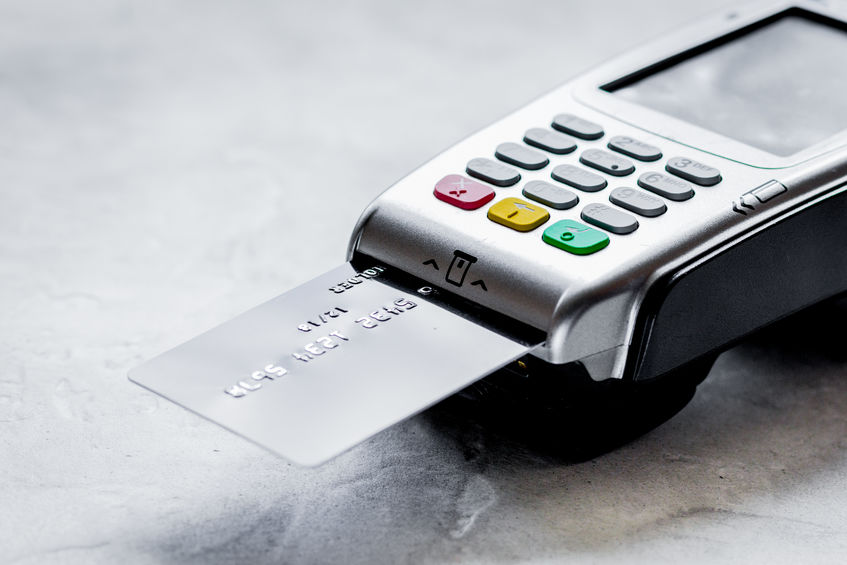Is Apple Pay Mobile Commerce?
Mobile commerce – or m-commerce for short – is a term that has been popping up more and more in the wider conversation around payments. While everyone is familiar with e-commerce, the term m-commerce leaves a lot of people, even within the industry, scratching their heads. So, just what is mobile commerce, why is it important, and where do popular new payment platforms like Apple Pay fit in?
Mobile commerce is e-commerce, except that rather than taking place on a computer, it takes place on a mobile device. Every time someone makes a purchase, accesses their bank, or sends or receives money on their phone or tablet, they’re engaging in mobile commerce. M-commerce is a wide net that already covers a huge number of payments and purchases, and it’s only growing as mobile devices replace traditional computers as our digital tools of choice.
While mobile transactions were once a novelty, they’re quickly becoming the norm. In Q2 2020, mobile commerce made up 31% of ecommerce sales in the United States – a 100% increase over the same quarter in 2015. By 2024, it’s estimated that almost 190 million Americans will be making purchases and moving money on their phones, making mobile payments a sector growing rapidly in importance.
Where Does Apple Pay Fit Into M-Commerce?
Mobile commerce comes in a variety of forms. A device-based purchase on a traditional ecommerce site like Amazon counts, as well as using a bank app or a transfer app like Venmo. One area of mobile commerce growing into a dominant force in the payments industry is the adoption of digital wallets, like Apple Pay.
Apple Pay enables m-commerce by allowing users to load their payment cards into their devices in digital formats. Rather than carrying around a bulky wallet full of payment cards or having to enter their data in line-by-line whenever they shop on the web, they can instead access and use their payment information in a flash with the tap of a button and a swipe of the thumb.
While Apple Pay also enables lightning-fast in-store purchases, the main value from a mobile commerce perspective lies in Apple Pay’s ability to eliminate the traditional online checkout process. In the past, online shoppers would have to enter their payment details each and every time they made a purchase. To avoid that, they would have to sign up for accounts on all of the sites they shop on – a huge hassle in password management alone, let alone all of the potential promotional spam!
With Apple Pay, online shoppers store all of that key payment data on their own devices rather than on a merchant’s servers. Right off the bat, that helps keep payment data under the owner’s control, adding to overall security and consumer confidence. When they’re ready to make a purchase, Apple Pay users simply click the Apple Pay checkout button, swipe their thumb across their device’s Touch ID to verify their identity, and the checkout is complete. The entire thing takes a matter of seconds, and the biometric thumbprint verification makes fraud all but impossible, further boosting the security offered by the system.
The security, ease, and speed of checkout that Apple Pay and other digital wallets from Samsung and Google offer make them consumer favorites and also help drive the wider transition to mobile shopping. While Apple Pay is available on MacBooks, it is not available on PCs. This will incentivize the segment of the market owning iPhones and Windows-based computers to favor their devices over their computer, further accelerating the adoption of m-commerce.
How to Get Started with Mobile Commerce and Apple Pay
Getting started with Apple Pay and mobile commerce is often as easy as enabling Apple Pay as an option in an ecommerce platform’s back end. Popular platforms like Shopify, BigCommerce, WooCommerce all offer Apple Pay integration right out of the box. For ecommerce systems without Apple Pay baked in, third-party plugins make integrating digital wallet payments a breeze. For more custom solutions like built-in app payments or custom web payment systems, Apple provides detailed guidance and everything needed in their developer portal.
Once Apple Pay has been enabled on a website or in an app, users will be presented with an Apple Pay payment button alongside the stock checkout buttons. Clicking that Apple Pay button will provide the user with a one-click, no login checkout experience that rivals Amazon, and is available on effectively any ecommerce site that wants it. As such, Apple Pay represents both a low-barrier way for merchants to break into m-commerce and also a great way to enhance the customer experience during traditional ecommerce sales as well.
BAMS merchant accounts integrate with a wide variety of Apple Pay-compatible ecommerce systems, and the BAMS team has the expertise and experience necessary to help guide you through a seamless digital wallet adoption process.
To find out more about how a BAMS merchant account can help you get started with m-commerce and Apple Pay while simultaneously saving you money with our guaranteed low pricing, submit a quote request and begin your free five-point price comparison today.




